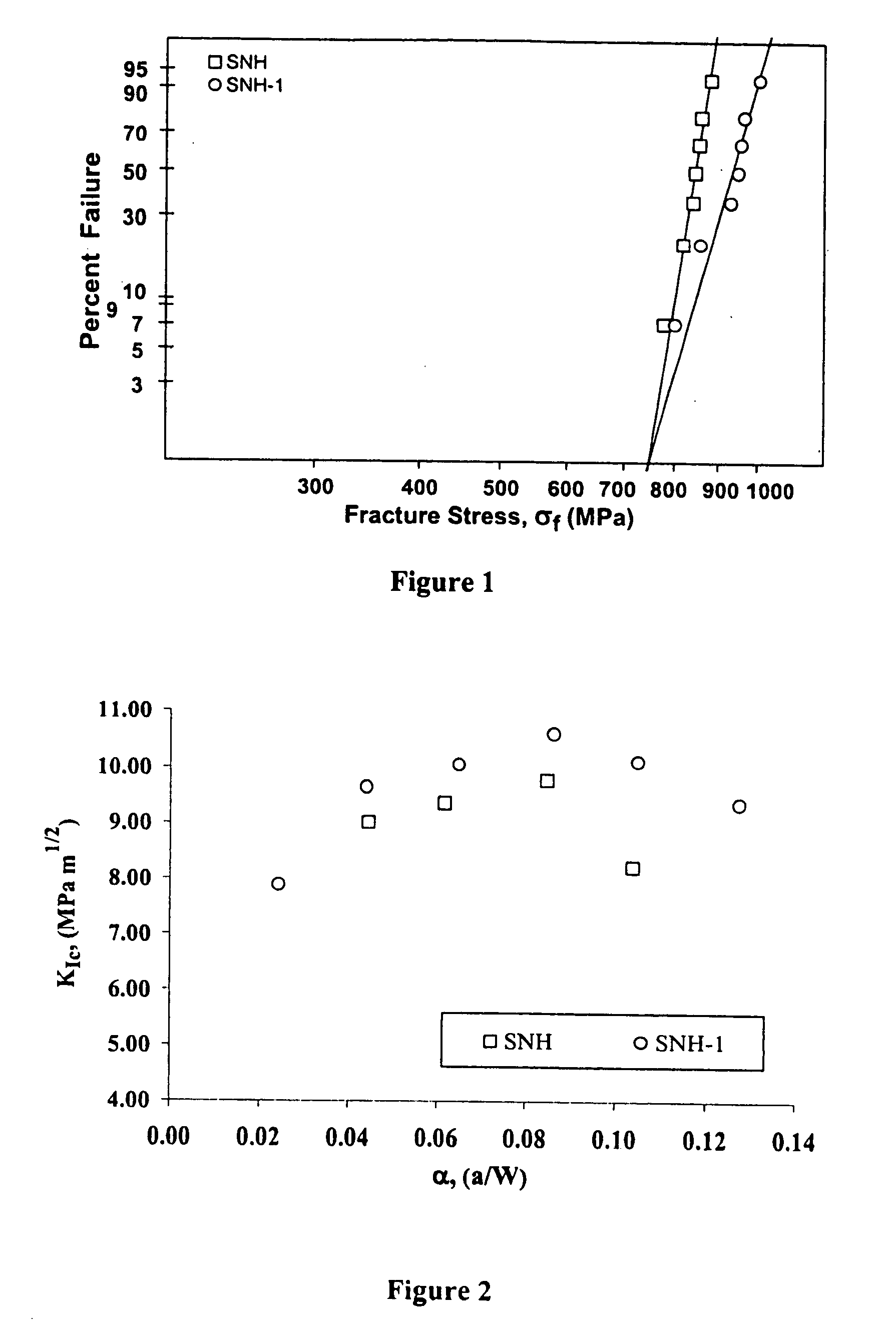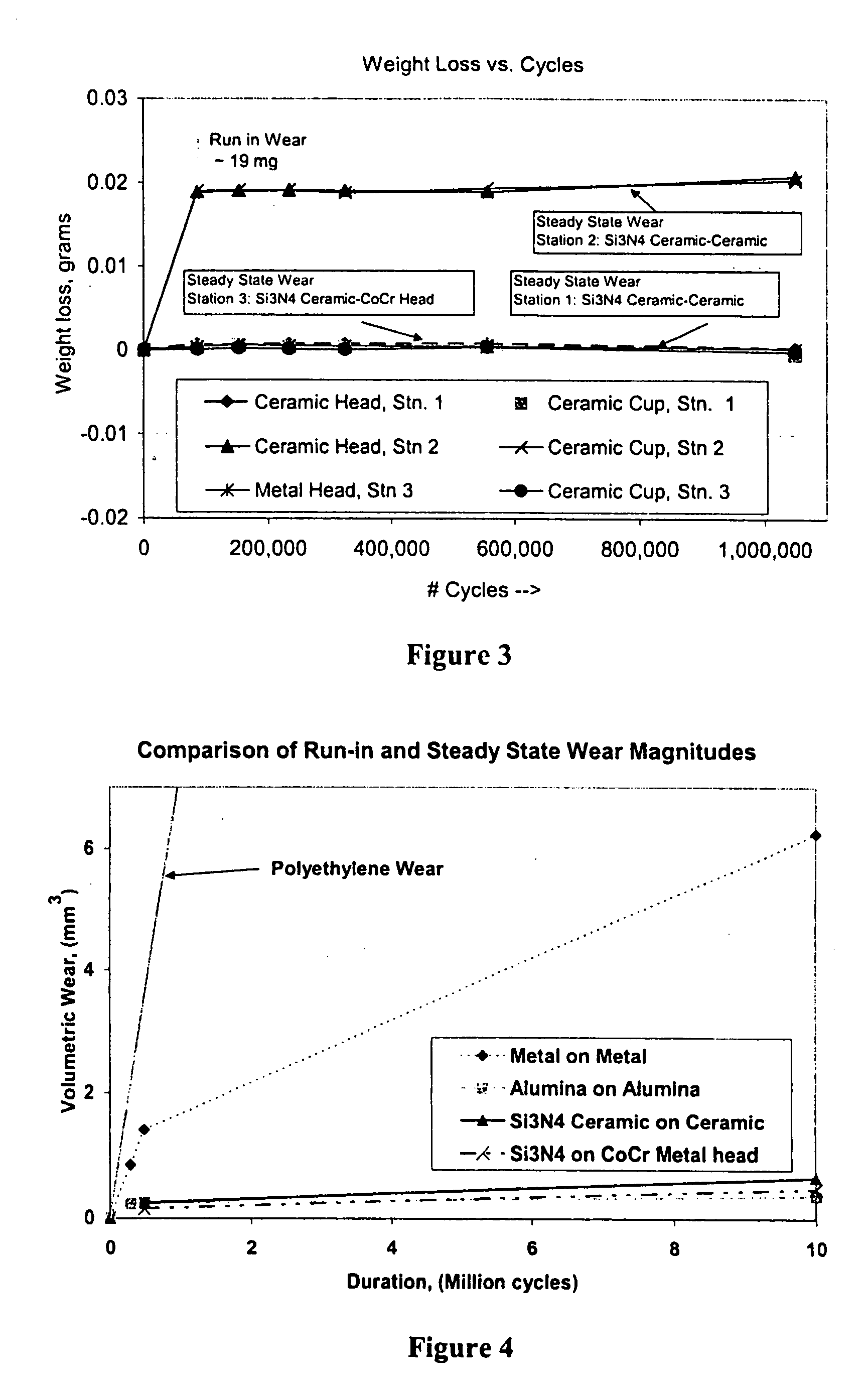Metal-ceramic composite articulation
a composite articulation and metal-ceramic technology, applied in the field of metal-ceramic composite articulation, can solve the problems of typical articulating joints, implant failure, inadequate pe), etc., and achieve the effects of minimal production, minimal wear, and high fracture toughness or resistan
- Summary
- Abstract
- Description
- Claims
- Application Information
AI Technical Summary
Benefits of technology
Problems solved by technology
Method used
Image
Examples
Embodiment Construction
[0025] Powders of Si3N4 and dopants such as alumina, yttria, magnesium oxide, and strontium oxide were conventionally processed to form a doped composition of silicon nitride. The dopant amount was optimized to achieve the highest density and mechanical properties. The homogeneous powders were then cold isostatic pressed at 300 Mega-Pascal (MPa) followed by sintering in a controlled atmosphere. Some cold isostatically pressed bars were hot isostatically pressed. A sintering temperature of 1875° C. was found optimal to achieve high density, absence of pores and other flaws and a uniform fine-grained microstructure. The best combination of density and mechanical properties was achieved with Si3N4 doped with 6 weight % Y2O3+4 weight % Al2O3.
[0026] Flexural strength was measured on standard 3-point bend specimens per American Society for Testing of Metals (ASTM) protocol method C-1161 and fracture toughness measured using single edge notched beam specimens per ASTM protocol method E399...
PUM
| Property | Measurement | Unit |
|---|---|---|
| surface roughness | aaaaa | aaaaa |
| diametric size | aaaaa | aaaaa |
| diameter | aaaaa | aaaaa |
Abstract
Description
Claims
Application Information
 Login to View More
Login to View More - R&D
- Intellectual Property
- Life Sciences
- Materials
- Tech Scout
- Unparalleled Data Quality
- Higher Quality Content
- 60% Fewer Hallucinations
Browse by: Latest US Patents, China's latest patents, Technical Efficacy Thesaurus, Application Domain, Technology Topic, Popular Technical Reports.
© 2025 PatSnap. All rights reserved.Legal|Privacy policy|Modern Slavery Act Transparency Statement|Sitemap|About US| Contact US: help@patsnap.com


